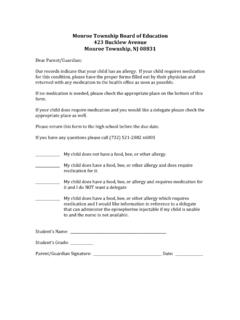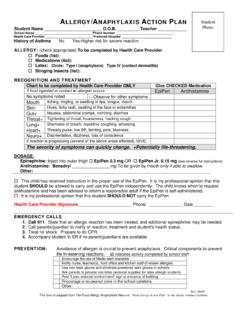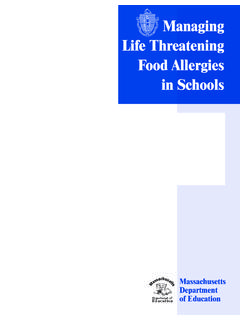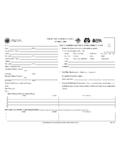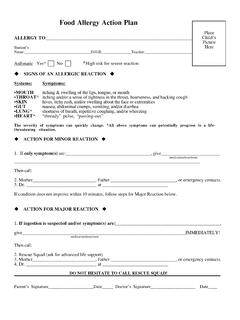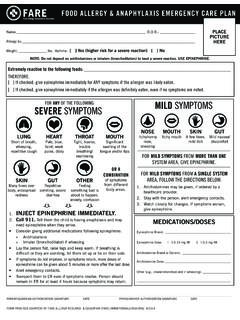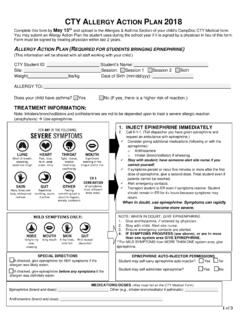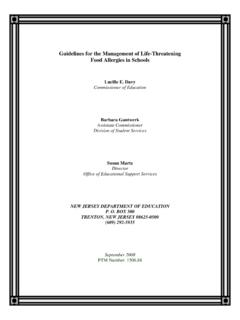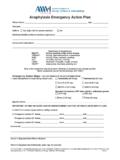Transcription of FPIES Emergency Action Plan
1 Copyright 2014 The FPIES FoundationChild's Allergens/Trigger Foods: _____ indicates history of shock_____ _____ + indicates history of additional_____ _____ non- FPIES symptoms_____ _____ _____ _____ _____ _____Current Status (What's Happening NOW?): _____ _____ _____Primary Physician's Requests: _____ _____ _____ Signed: _____ Additional Diagnostic Information/Need for Testing: _____ _____ _____ FPIES ( ), food Protein-Induced Enterocolitis Syndrome, is a type of food allergy affecting the gastrointestinal (GI) tract. Unlike typical food allergies, symptoms may not be immediate and do not show up on standard allergy tests. The symptoms of this type of allergic reaction include repetitive vomiting that may not start for a few hours ( , 2 ) following ingestion of the food to which the child is allergic.
2 Even trace amounts can trigger a reaction. There is often diarrhea that starts later (after 6 hours). In some cases (about 20%), the reaction includes lethargy, hypotension, acidemia, and/or methemoglobinemia. The treatment is symptomatic and can include intravenous fluids ( normal saline bolus, hydration) and steroids for significant symptoms. The latter is given because the pathophysiology is that of a T cell response. This information is being given so that this could be considered in the differential diagnosis for this child in the event of , some children affected by FPIES experience chronic reaction patterns independent of the acute reaction patterns. Though this reaction pattern does not typically require immediate Emergency intervention, it can lead to serious consequences if left untreated and therefore must be appropriately reported to the provider if symptoms are observed.
3 These may include: _____ : _____ Phone: _____ Office /hospital_____ Physician: _____ Phone: _____ Office /hospital_____ Instructions when contacting physician:_____ _____FPIES Emergency Action PlanChild's name: _____ Nickname : _____ DOB: ____/____/_____Primary language spoken: _____ Address:_____ Guardian: _____ Phone: _____ Guardian: _____ Phone:_____ Emergency Contact: _____ Phone: _____ Alt. Phone: _____
